Tulips aren’t just pretty; they also have their own “language.” These flowers can mean many things, from a declaration of love to a sign of forgiveness.
Did you know that tulips won the hearts of people in the Ottoman Empire?
Intrigued? You should be!
Let’s explore the fascinating history, cultural meaning, and everyday uses of tulip flowers.
History of Tulips: From Ottoman Empire to European Craze


Let’s briefly go into the past to trace the history of tulips. Tulips were initially domesticated by the Ottomans, despite their Central Asian origins.
They carried tulips to Turkey, where they became the symbol of the empire.
The tulip obsession, however, continued after that. These colorful flowers traveled to Europe in the sixteenth century, where the Dutch fell madly in love with the blooms.
There was even a time when tulip bulbs were more valuable than gold, known as Tulip Mania!
Colors, Colors Everywhere: Tulip Symbolism Based on Hue
Now that we’ve had our short history lesson let’s talk about what you’re here: the significance of tulip blossoms. Let’s break down the symbolic meaning of each color.
Red
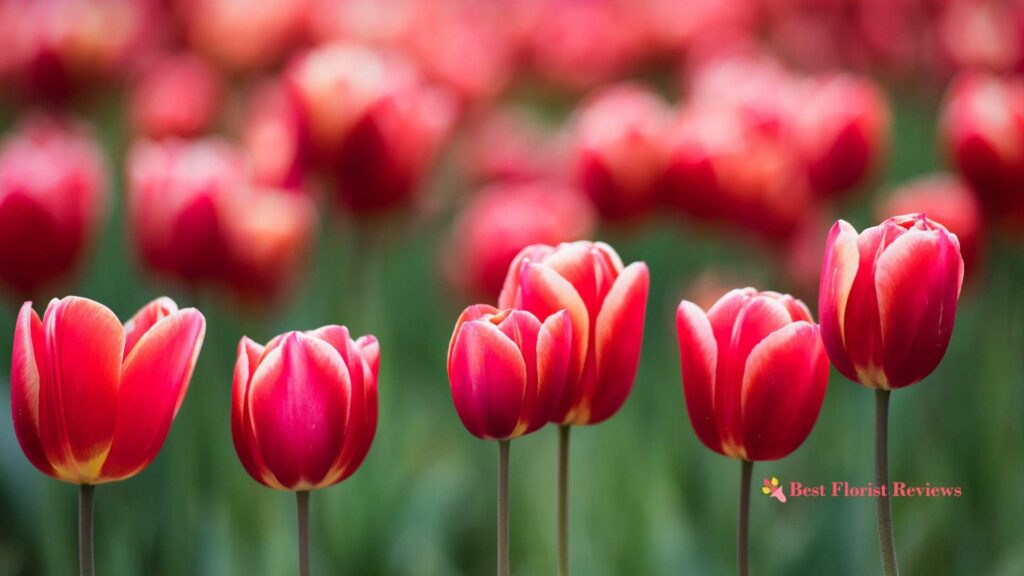

Have you ever gotten a red tulip bouquet? If so, I hope you were aware that you were being loved.
Red tulips are a well-known representation of intense love and adoration.
Recommended use: Thus, a red tulip is a way to go if you want to let someone special know how you feel.
Yellow
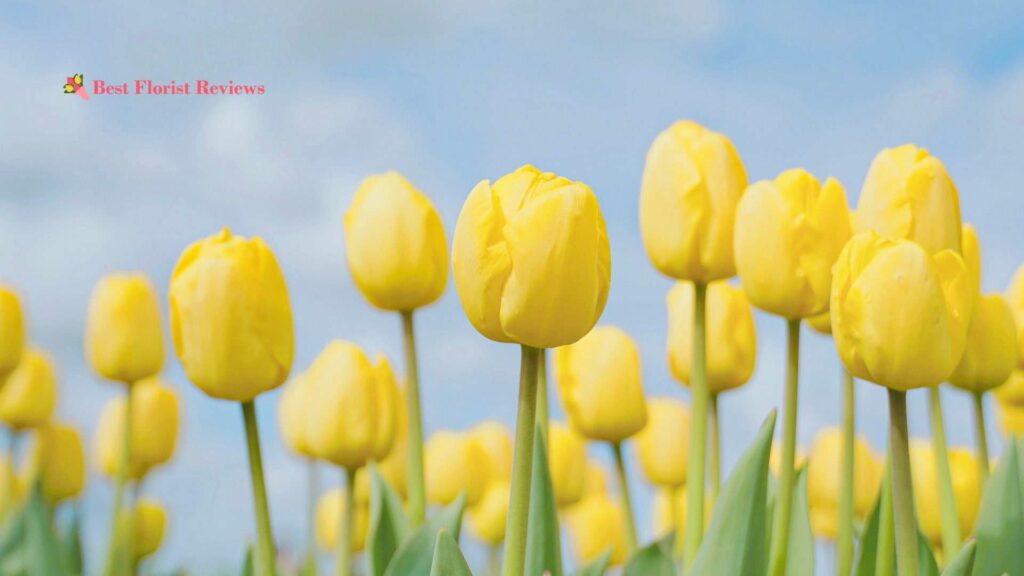

Tulips in color yellow are like the sun; they stand for joy, merriment, and friendship!
Recommended use: Yellow tulips are the finest choice to cheer someone’s day or congratulate a best friend.
White
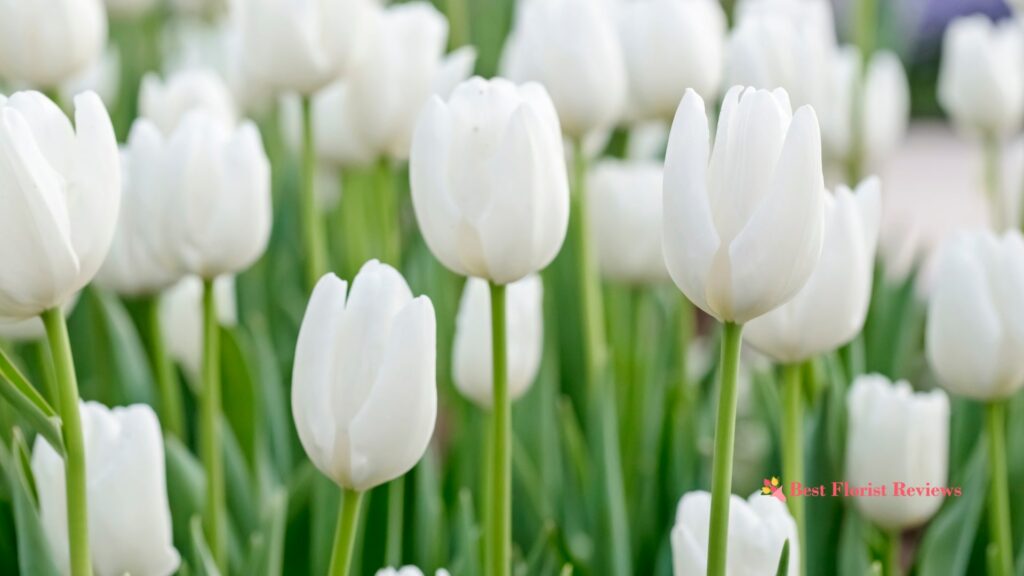

White tulips are great for weddings, baptisms, or other occasions that represent a new beginning since they stand for innocent and pure things.
Recommended use: A bouquet of white tulips could help you “mend fences” because they stand for forgiveness.
Purple
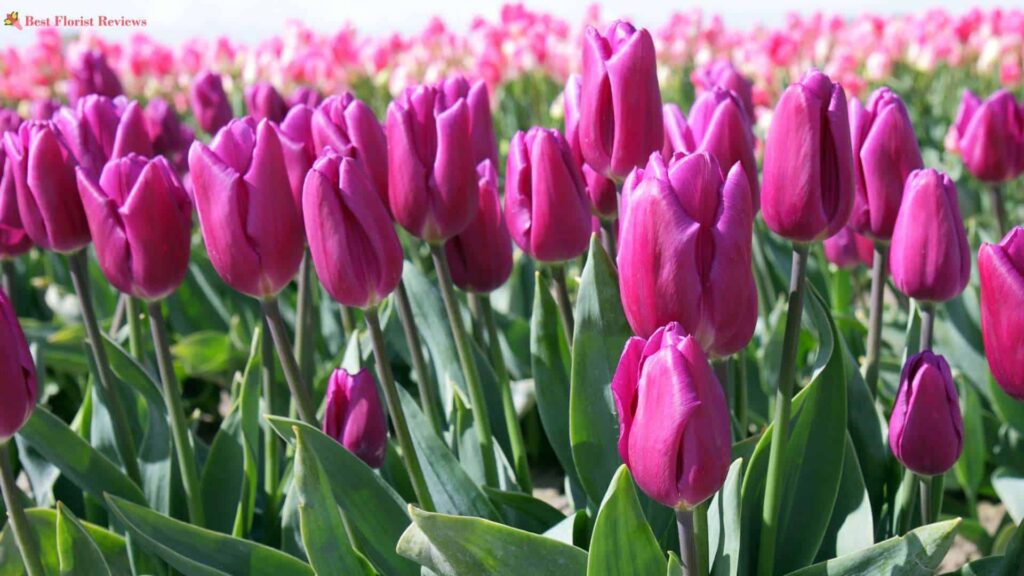

Purple tulips denote mystery.
Recommended use: Purple tulips are the way to go if you want to give your floral arrangement a dash of sophistication and mystery.
The Language of Tulips: Expressing Feelings through Flowers
Tulips may convey significance through color, form, and structure! The next time you gift or get tulips pay close attention to these; they may disclose more than you realize.
Single Tulip vs. Bouquet
Single Tulip


Meaning: A single tulip can represent individuality and uniqueness.
Recommended use: To inspire people to embrace their own unique qualities and celebrate diversity.
Bouquet


Meaning: A bouquet of tulips symbolizes unity and togetherness.
Recommended use: To convey the idea of collective strength and collaboration.
Open Tulip vs. Closed
Open Tulip
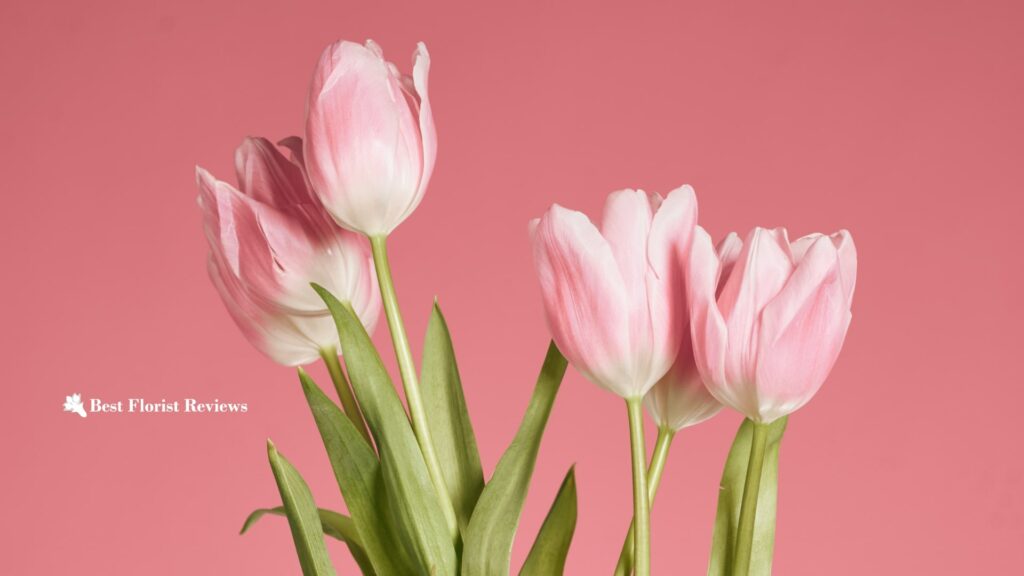

Meaning: Closed tulips represent potential and new beginnings.
Recommended use: Use closed tulips as a symbol of anticipation and potential, such as in new product launches or at the beginning of a project.
Closed
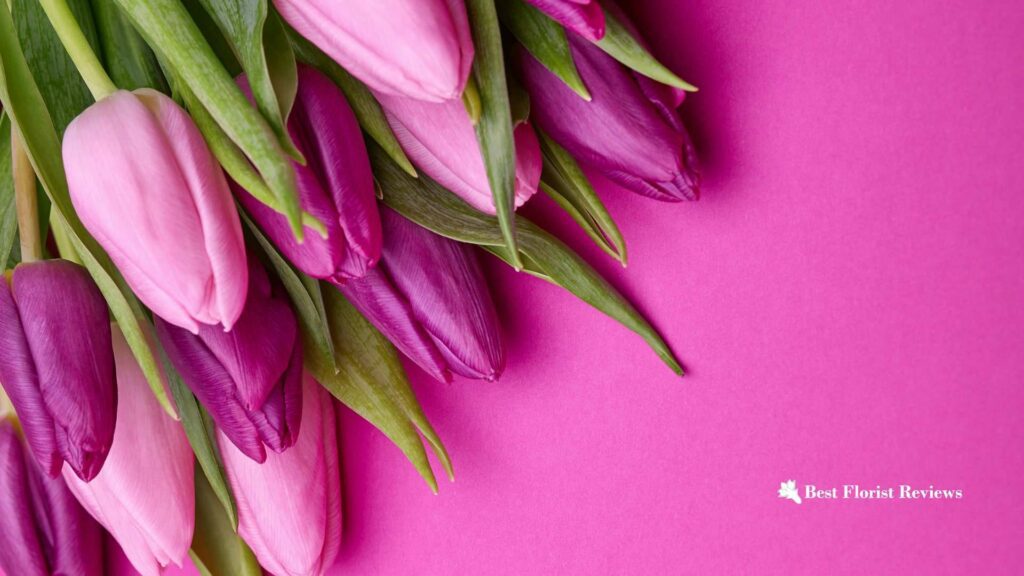

Meaning: Open tulips represent love, passion, and the arrival of spring.
Recommended use: Use open tulips to express joy, excitement, and positive emotions, such as in celebration of a special occasion, or to decorate a springtime event.
Tulips across Cultures: Different Meanings around the World
Tulips have been admired by many cultures. Their meanings can vary depending on where you are. Let’s take a look at some cultural interpretations of these lovely flowers.
Persian Legend: The Tale of Farhad and Shirin


Red tulips are connected to a tragic love story in Iranian culture. According to the legend of Farhad and Shirin, a stonemason named Farhad fell in love with a princess (Shirin).
Farhad committed suicide because he was so distraught at Shirin’s passing. Each drop of his blood reportedly produced a red tulip, signifying eternal love and sacrifice.
Chinese Symbolism: Wealth and Prosperity


Tulips symbolize riches and success in Chinese culture. Its vibrant hues and sturdy stems stand for achievement and plenty.
Therefore, consider putting some tulips in your space to draw good fortune!
Turkish Significance: Indulgence and God’s Love


Tulips were once the emblem of the Ottoman Empire, as was previously mentioned. Tulips are viewed as a symbol of extravagance and God’s love in Turkish culture.
The tulip’s beautiful form and delicate petals symbolize the perfection and beauty of God.
Celebrating Spring with Tulip Festivals


Springtime is associated with tulips. After a long winter, they are among the first flowers to bloom.
Annual tulip festivals are held in several nations, including the Netherlands and the United States, to mark the start of spring and highlight these lovely blooms.
What are the most popular tulip varieties?
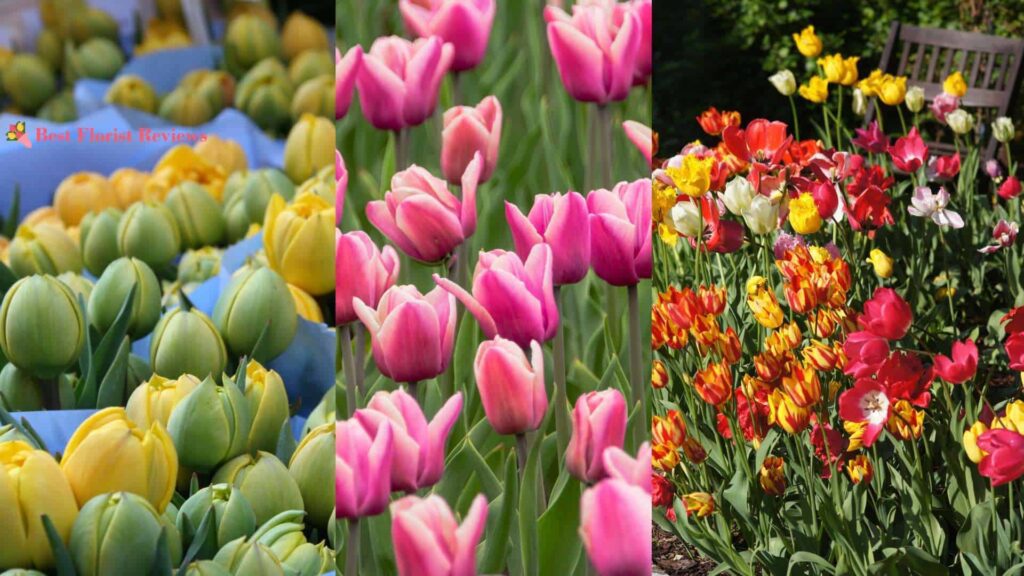

There are more than 3,000 registered kinds of tulips, each with unique hues, sizes, and forms.
- Single Early Tulips. These tulips often appear in the early spring. They look like traditional tulips, with a single, cup-shaped bloom at the end of a somewhat short stem.
They are available in various colors, from red and pink to yellow and white.
- Triumph Tulip. Because of their typical tulip form, slightly pointed tip, and robust stem, they are frequently used as cut flowers. They flower around the middle of spring and can be found in many different tones.
- Darwin Hybrid. This type of tulip is a product of hybridization between Single Late and Fosteriana tulips. Their huge, round blossoms and robust branches make them a great choice for planting outside.
They flower in the second half of spring and offer a rainbow of hues.
- Lily-Flowered. This variety is so called because its unusual form is reminiscent of a lily. The outwardly pointing petals and the delicate stem make them perfect for arranging.
They flower in late spring and come in a wide variety of tones.
- Parrot tulips. These tulips have bold, ruffled petals and vivid hues, making them stand out in a bouquet. Its unusual look helps them stand out in any floral arrangement or landscape.
They flower anywhere from the middle to the end of spring, and their colors range from red to pink to yellow to purple.
Things to Look for When Buying Tulips


Choose tulips with firm, fit bulbs that feel substantial for their size. Avoid using bulbs that are soft, mushy, or have moldy spots, as they may be sick or decomposing.
Here are more tips on buying tulips:
- Look for bulbs that don’t show any evidence of mold or deterioration, such as mushy places or moldy patches. These bulbs may have bacterial or fungal infections that can spread to other garden plants.
- Select bulbs that are large enough to produce flowers that are in good health. Bulbs that are too little or withered might not grow into strong, healthy plants or flowers that are too small or frail.
- Choose bulbs with good color and shape based on your desired meaning. Choose tulips that go with your intended color scheme or style since they come in various hues and forms.
- Be sure to purchase tulip bulbs for your region’s planting season at the right time of year.
While tulip bulbs are normally planted in the fall, ensure they have been stored properly if you purchase them in the spring or summer to ensure their vitality.
How to Arrange and Present Tulips
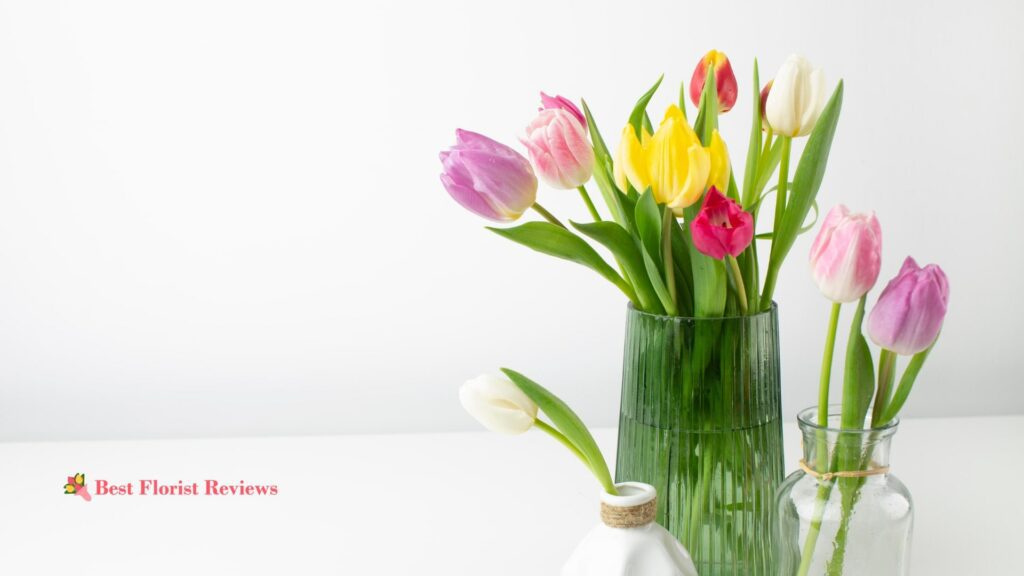

Make your tulips more beautiful by doing the best arrangements. Here are some tips on how to arrange tulips:
- Cut the tulips. Use a sharp, clean knife or scissors to cut the tulips to the desired length. Tulips continue to grow after they’re cut, so it’s best to cut them a little shorter than you want them to be in the final arrangement.
- Remove any leaves that will be below the waterline in the vase. This will prevent the leaves from decaying and causing the water to become cloudy.
- Choose a vase that is appropriate for the size and shape of your tulips. A tall, narrow vase is ideal for longer-stemmed tulips, while a shorter, wider vase is better for shorter-stemmed tulips.
- Fill the vase with fresh, clean water. Make sure to fill it enough so that the tulip stems are submerged about halfway.
- Arrange the tulips in the vase as desired. Tulips can be arranged in a variety of ways, such as in a tight cluster or with stems fanning outwards. For a more natural look, let the tulips lean slightly to one side.
- Add other flowers or greenery to the vase, such as daffodils, hyacinths, or ferns, to create a more complex arrangement.
Alternatively, you can use other decorative elements, such as stones or seashells, to add texture and interest to the vase.
Pro tip: Remember to keep the water in the vase fresh and clean, and to trim the stems every few days to promote water uptake and prolong the life of the flowers.
How to Care for Tulips
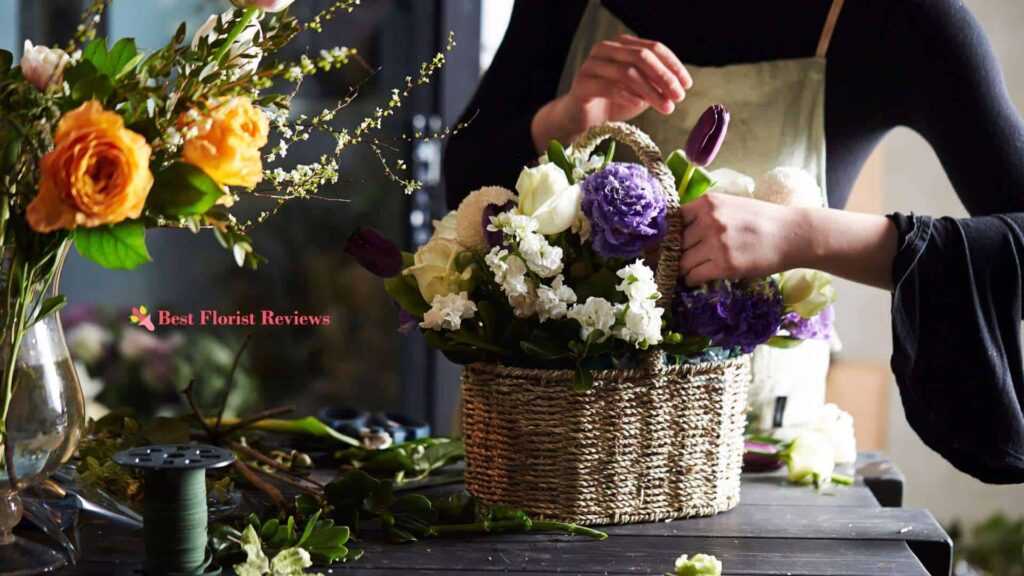

While tulips are relatively easy to care for, they do require some attention and maintenance to ensure that they stay healthy and thrive.
Whether you are growing tulips in your garden or enjoying a bouquet of fresh-cut tulips, taking a few simple steps to care for them will help to ensure their longevity and beauty
- Keep them cool. Tulips prefer cool temperatures, so keep them away from direct sunlight and heat sources. Place them in a cool room or near a window that gets indirect sunlight.
- Change the water in the vase every two to three days. This will help keep the water clean and prevent bacteria from growing, which can cause the flowers to wilt prematurely.
- Trim the tulip stems every few days to promote water uptake. Use a sharp, clean knife or scissors to make a diagonal cut on the stem, which will help the tulips absorb more water.
- Avoid placing tulips near fruits or vegetables that produce ethylene gas, as it can cause the flowers to wilt prematurely. Keep them away from ripening fruits, such as apples and bananas, and from vegetables that are stored in the same area.
- Display tulips in a vase filled with fresh, clean water. Avoid using warm or hot water, as this can cause the flowers to wilt faster. Instead, use room temperature or slightly cool water.



